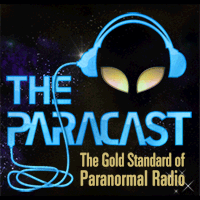George Wingfield: you mean Linda Moulton Doty isn't a real name? I'm shocked.
As for gut feel: sure, it's all you've got until you actually do the work. Some people get stuck at the level of 'is any of this real?' And at that stage, they can't evaluate the work of somebody like Strieber in any real way, but they're willing to give him the benefit of the doubt because maybe they've experienced things, too. Problem is, the question whether any strange experiences happen in general is totally separate from what's going on in Strieber's work. And especially in Strieber's case. He's an evocative writer who has a knack for using just the right word and telling things in just the right order to make it feel real. But it often isn't.
Take this from the paper. This is from an interview Strieber gave in 1985 about his experience at the Whitman shooting. Bear in mind, Strieber later came out in
Communion and said he was never there.
“I had just had a Coke. I was walking from the student union to the academic center, which was an open-shelf library near the Tower, when I heard a sharp bang that echoed off the University co-op across the street behind me. And the reason I am alive today is that I didn’t turn around. I thought it was coming from the Tower. Maybe I saw some movement out of the corner of my eye. All the people in front of me thought the sound came from the co-op in front of us, not the Tower behind.
“The next thing I saw was a little boy on a bicycle coming toward me—his head just exploded. I didn’t hear that one. I knew then that it was coming from the Tower. The other people all took cover that shielded them from the co-op, but left them exposed to the Tower. They were all killed, shot. I ran to a little retaining wall about three feet high which was near that base of the Tower building, about twenty yards from it. And I laid down there.
“He shot two girls in the stomach right behind me, thirty feet away from me. And they were lying there in the grass, screaming, begging, pleading for help, trying to crawl along. One girl’s legs wouldn’t work. The other one was vomiting pieces of herself out of her mouth. And I could smell the blood and the odor of their stomachs, what was in their stomachs and their colons. The smell was horrible coming out of these poor kids, two young coeds. And he did that to get me and this other guy who was hiding behind this embankment to come out. I stayed there. I was sick with dread, watching them die, knowing that that gun was waiting. And the other guy suddenly went out and tried to pull one of them away and got shot in the head and killed. Whitman just shot the top of his head off.
“I stayed right where I was for a long, long time—until I saw them, with my own eyes, bringing Whitman’s body out. The ambulance men came up to me and said, ‘You can come out now, he’s dead.
“But I would not move until I saw him.
Today, some twenty years later, Whitley Strieber still lives in the shadow of the Texas Tower. He sits with me, the tears of those memories burning his eyes, and he is afraid; and the rifle of Charles Whitman, striking from its godlike height, is the relentless symbol of the terror that he has learned to expect from life. (Fear 192-3)
If you look up the Whitman shooting, there was no little boy on a bicycle that got shot in the head.

